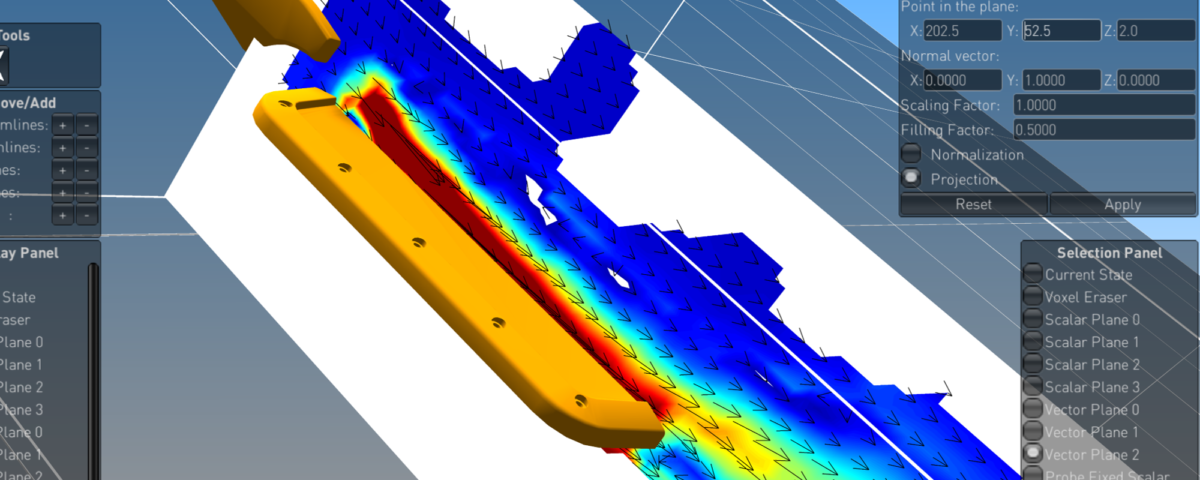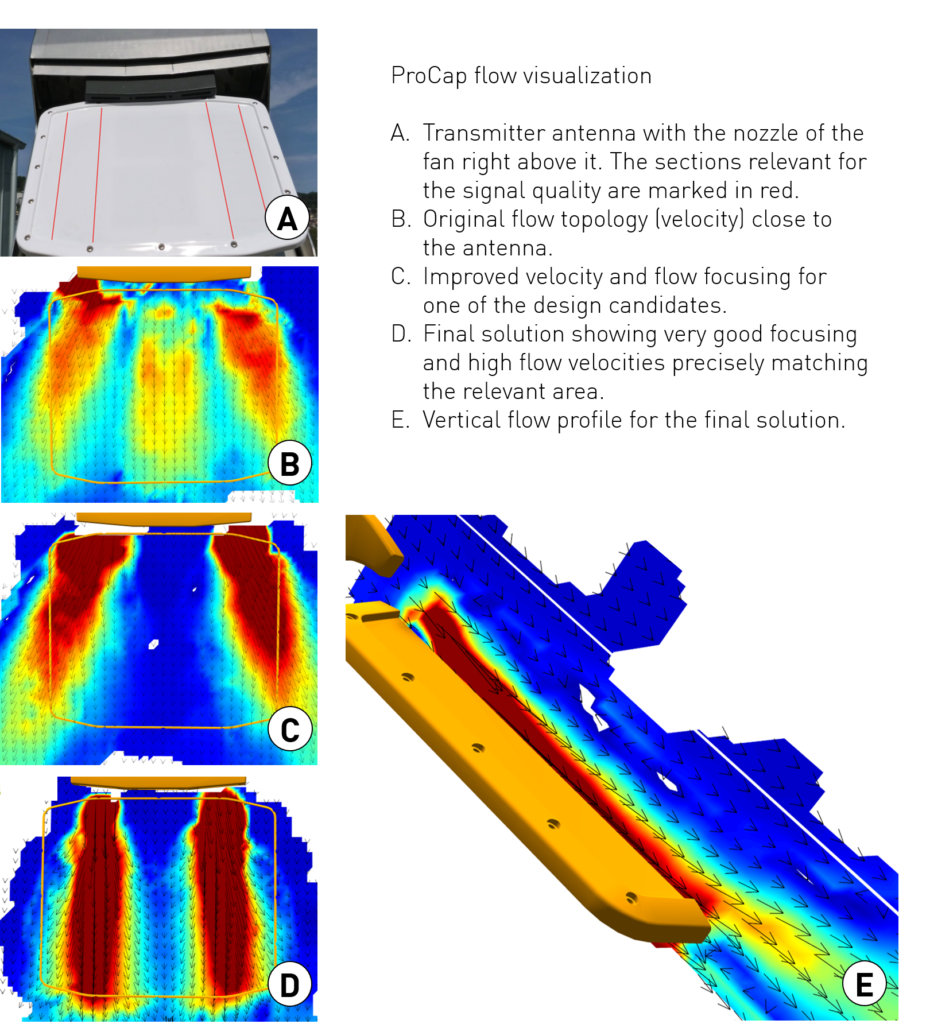Case study industrial flow optimization with ProCap

Task
Our customer builds and operates a wide range of monitoring equipment such as radio antennas that are required to operate reliably even in adverse weather conditions. To do so, the antennas are heated and include a fan to prevent the accumulation of snow on the surface of the antenna. During heavy snowfall however, it was repeatedly observed that the fan was not able to remove the snow which caused the signal quality to deteriorate.
Our task was to optimize the snow removal efficiency without changing the instrument too much. The solution should also be applicable to already installed systems.
Approach
In the instrument, a flow channel connects the fan to the exit nozzle, a rather complex and expensive part to make. We judged its pressure loss to be acceptable and decided to aim for a small retrofittable attachment that connects to the current nozzle. To validate the efficiency of the proposed modification, the options were:
- Field testing: Very slow (one has to wait for the critical snow conditions to occur) with only limited feedback on the flow topology.
- Flow visualization (tufts, oil flow): Well suited and simple to reveal the flow topology on the surface. No information about the flow velocity (no quantitative data) and 3D topology.
- CFD simulation: Good 3D flow information but requires high effort to model and resolve the complex inflow conditions, wall roughness and nozzle geometry. Rather expensive for such a small part.
- 3D flow measurements (PIV in multiple planes or point measurement probe (Pitot, LDV) on a traverse: Highly accurate quantitative data but expensive and time-consuming to set up. Very slow verification cycle (idea – verification -modification).
- 3D flow measurements with ProCap: Quantitative full 3D dataset both close to the surface and in the free stream. Quick set-up (30 min including preparation of geometry file) and measurement time (10 min per configuration). The real-time flow visualization allows to verify the design while the measurement is taking place).
Verification of design candidates with ProCap
With a setup well suited for ProCap (speed range, size) the measurements were done quickly. In a first block the flow profile from the existing nozzle was determined as a baseline. Subsequently, several candidate designs (done with tape, clay and cardboard) where tested. With the unique capability of ProCap to visualize the result in real time we were able to assess, adjust and fine-tune the design already at this early stage. From the prototype we derived a 3D printed part that attaches to the original nozzle. Only one quick verification of its performance was necessary after printing the part and was done with ProCap in minutes.
Conclusion
The capability of the nozzle to remove the snow under all conditions is crucial to the performance of the instrument. The choice to modify only the exit geometry of the model proved successful. With the unique capability of ProCap to visualize the result instantaneously, it was possible to develop and fine-tune that small and inexpensive but fluiddynamically rather complex ad-on quickly and on a tight budget. Field test shows flawless performance of the snow-removal device and good signal quality for the antenna under even the worst conditions.

